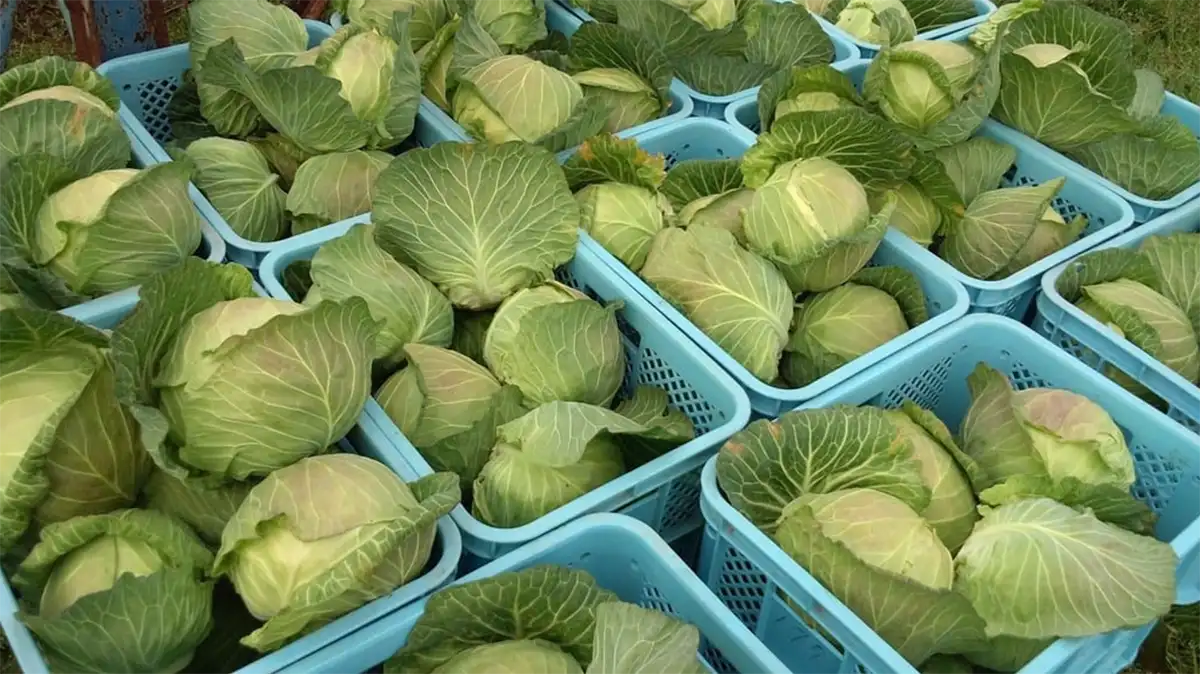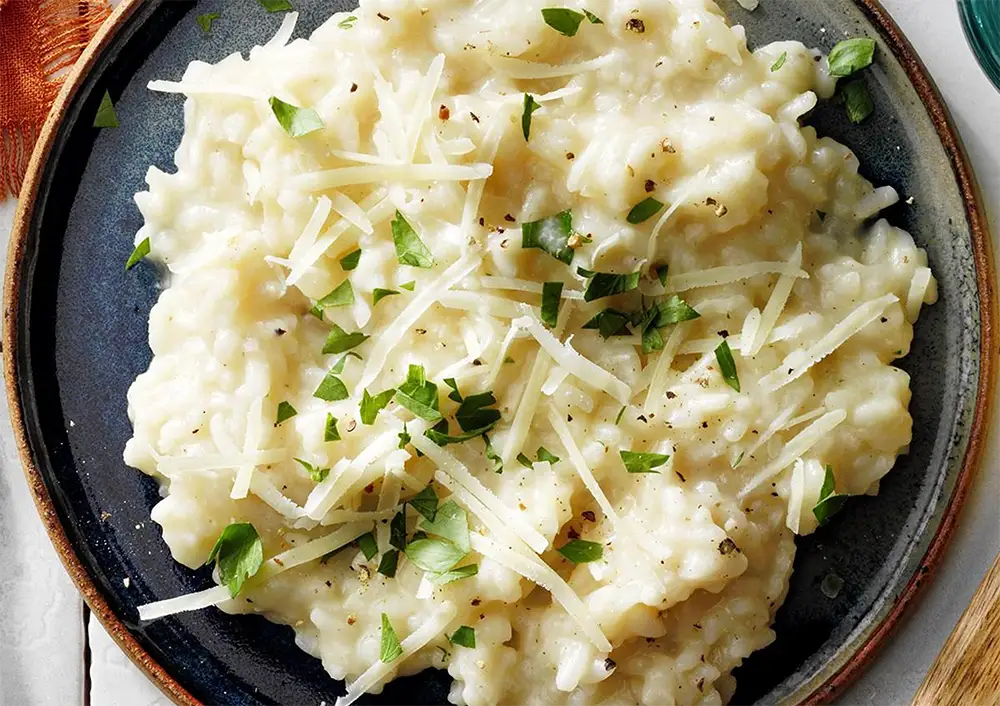Cabbage
Cabbage is in the mustard family with the “cole crops” or brassicas, closely related to broccoli, cauliflower and brussels sprouts.
Cabbage, is a leafy green, red (purple), or white (pale green) biennial plant grown as an annual vegetable crop. Descended from the wild cabbage (B. oleracea var. oleracea), it’s in the mustard family with the “cole crops” or brassicas, closely related to broccoli, cauliflower and brussels sprouts.
Smooth-leafed, firm-headed green cabbages harvested at 1-2 lbs are the most common. With long sunny days, heads can grow quite large. As of 2012, the heaviest cabbage ever harvested was 138 lbs 4 oz.
Likely domesticated somewhere in Europe before 1000 BC, the Romans described cabbage as a “table luxury”. By the Middle Ages, it was a prominent ingredient in European cuisine. By the 17th and 18th centuries, cabbage was a staple in central, northern, and eastern Europe. European sailors packed it to prevent scurvy during long ship voyages at sea. The age of exploration helped spread the plant to the Americas, Asia, and around the world.

Herbalism
More than an edible vegetable, cabbage was used in ancient medicine and herbalism. The Ancient Greeks recommended consuming it as a laxative and used the juice as an antidote for mushroom poisoning, for eye salves, and as liniments for bruises. Ancient Egyptians ate cooked cabbage at the beginning of meals to reduce the intoxicating effects of wine. This traditional usage persisted in European literature until the mid-20th century.
The cooling properties of the leaves made cabbage a popular treatment for trench foot in World War I, and as compresses for ulcers and breast abscesses. Other recorded uses in European folk medicine include treatments for rheumatism, sore throat, hoarseness, colic, and melancholy. Both mashed cabbage and its juice have been used in poultices to treat boils, warts, pneumonia, appendicitis, and ulcers.
Since Roman days, the Italians have added fresh arugula to salads (often without lettuce). It is added to a pizza just after baking, and as a salad with burrata or a mozzarella cheese. It is also used in Apulia, in southern Italy, to make the pasta dish cavatiéddi, where large amounts of coarsely chopped rocket are added to pasta seasoned with a homemade reduced tomato sauce and pecorino cheese.” Arugula is added, chopped, to umpteen sauces and cooked dishes and becomes a fresh salsa (made by sauteeing it in olive oil and garlic) as a condiment for cold meats and fish. In Rome, rucola is used in straccetti, a dish of thin slices of beef with raw rocket and Parmesan cheese.
In Turkey, similarly, arugula is eaten raw as a side dish or salad with fish, or served with a sauce of extra virgin olive oil and lemon juice.
In Slovenia, rocket is often combined with boiled potatoes or added in a soup.
In West Asia, Pakistan and Northern India, Eruca seeds are pressed to make taramira oil, used in pickling and (after aging to remove acridity) as a salad or cooking oil.
Cultivation
Modern cabbage is generally grown for its densely leaved heads, produced during the first year of its biennial cycle. Plants perform best when grown in well-drained soil in a location that receives full sun. Different varieties prefer different soil types, from lighter sand to heavier clay, but all prefer fertile ground with a pH between 6.0 and 6.8. Plants need adequate levels of nitrogen in the soil, especially during the early head formation stage, and sufficient phosphorus and potassium during the early growth of the outer leaves.
Temperatures between 39 and 75 °F prompt the best growth, as extended periods of higher or lower temperatures may result in bolting (premature flowering).
Plants can be started in indoors early in the growing season before being transplanted outside. Seedlings typically emerge in about 4–6 days from planting at a soil temperature between 68 and 86 °F. Growers normally transplant young plants 12 to 24 inches apart. Closer spacing reduces the resources available to each plant (especially the amount of light) and increases the time taken to reach maturity.
Cabbage heads are mature when they are firm and solid to the touch. They are harvested by cutting the stalk just below the bottom leaves with a blade. The outer leaves are trimmed, and any diseased, damaged, or necrotic leaves are removed so as not to spread disease. Delays in harvest can result in the head splitting as a result of expansion of the inner leaves and continued stem growth.
Cultivation problems
Everything eats cabbage, from insects to fungus to bacteria. And due to its heavy nutrient requirements, cabbage is prone to nutrient deficiencies.
The cabbage looper is infamous in North America for its voracious appetite and for producing frass that contaminates plants. Destructive soil insects include the cabbage root fly and the cabbage maggot, whose larvae can burrow into the part of plant consumed by humans.
Planting near other members of the cabbage family, or where these plants have been placed in previous years, can prompt the spread of pests and disease. Excessive water and excessive heat can also cause cultivation problems.
Food preparation
The homely cabbage is prepared and consumed in many ways, across many cuisines. Its can be served raw, dressed with condiments or steamed, stewed, sauteed or pickled. Pickling is a common way of preserving cabbage, creating dishes like sauerkraut and kimchi (although kimchi is more often made from Chinese cabbage (B. rapa subsp. pekinensis). Bean curd and cabbage is a staple of Chinese cooking, while the British dish bubble and squeak is made primarily with leftover potato and boiled cabbage and eaten with cold meat.
In Poland, cabbage is one of the chief food crops, frequently eaten as a side dish or in such dishes as bigos (cabbage, sauerkraut, meat, and wild mushrooms) gołąbki (stuffed cabbage) and pierogi (filled dumplings). In India and Ethiopia cuisine use it in spicy salads and braises. For Americans, our most popular dishes are coleslaw, and sauerkraut.
Consumption varies widely around the world: Russia has the highest annual per capita consumption at 44 lb, followed by Belgium at 10.2 lb and the Netherlands at 8.8 lb. Americans consume 8.6 lb annually per capita.
Cooked cabbage is often criticized for its pungent, unpleasant odor and taste. These develop when it is over cooked and hydrogen sulfide gas is produced.
Nutrition
Raw cabbage is 92% water, 6% carbohydrates, 1% protein, with negligible fat. Cabbage is a rich source of vitamin C and vitamin K, and a moderate source of vitamin B6 and folate.
Recipes
Recipe Box
Lorem Ipsum is simply dummy text of the printing and typesetting industry.
Parmesan and Shallot Risotto
A yummy side to warm your heart and taste buds!
View All Recipe
Stay Connected
Sign up for e-news to learn about special events and offerings.